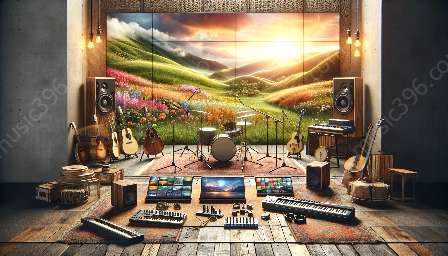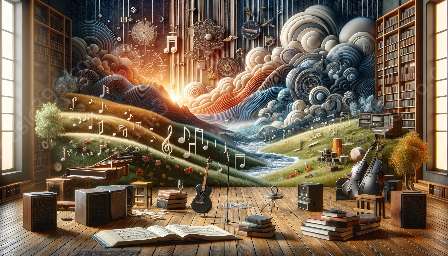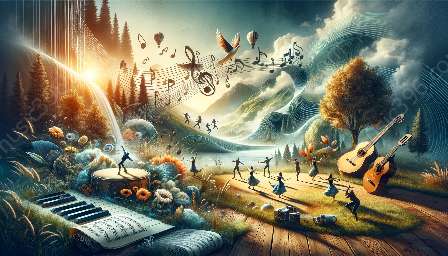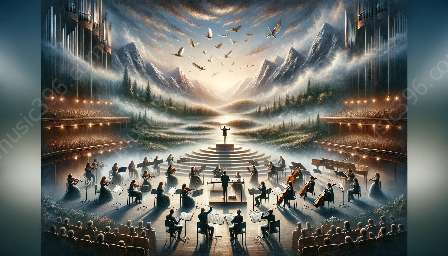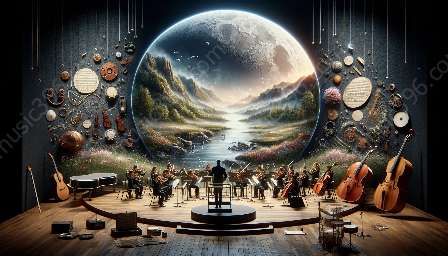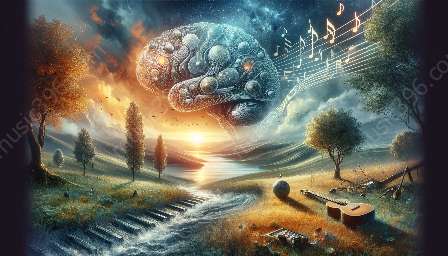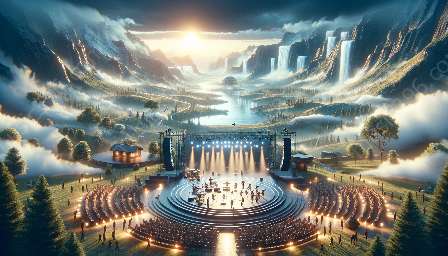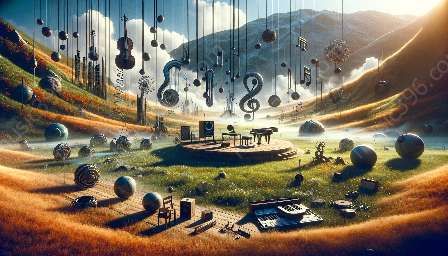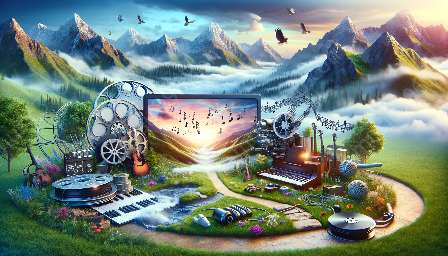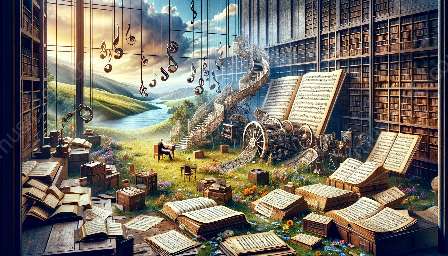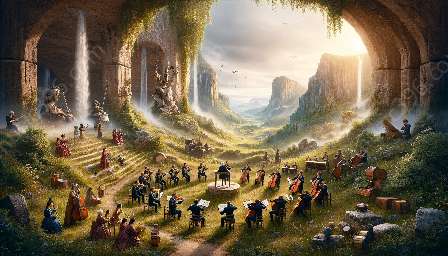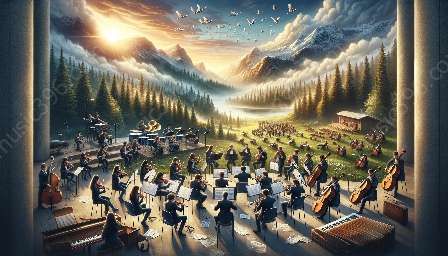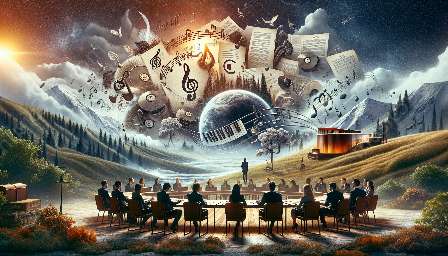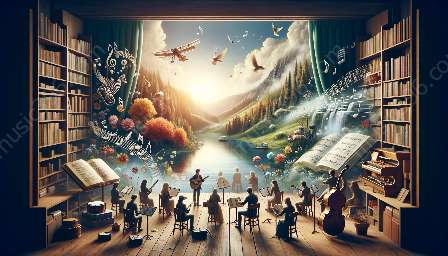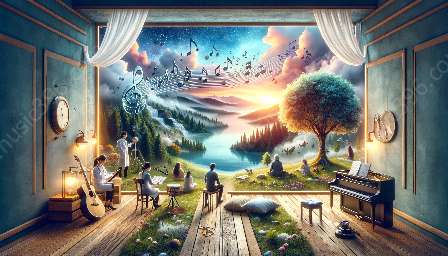When experiencing a film or television show, the auditory elements play a crucial role in engaging and immersing the audience in the storytelling. Notably, the interaction between sound design and music is an essential aspect of shaping the viewer's emotional journey. In this article, we will delve into the intricate relationship between sound design and music in visual media, the impact of music on the audience, and the significance of music references.
The Role of Music in Film and Television
Music is a powerful tool in film and television, as it sets the tone, conveys emotions, and enhances the overall impact of storytelling. Whether it's a suspenseful scene in a thriller or a heartwarming moment in a drama, the right music can evoke powerful emotions and captivate the audience. Through careful selection and composition, filmmakers can effectively manipulate the viewer's emotions, leading to a more immersive and memorable viewing experience.
Enhancing Storytelling with Music
One of the primary roles of music in visual media is to enhance storytelling. It can underscore pivotal moments, create tension, or provide a sense of closure. For example, a rising crescendo in the background music can signal an impending plot twist, while a soft, melancholic melody can convey the depths of a character's sorrow. Furthermore, different genres of music can shape the overall mood of a scene, whether it's classical music adding a timeless elegance to a period piece or electronic beats infusing energy into an action sequence.
The Emotional Impact of Music
Music has the unique ability to evoke emotional responses from the audience. It can amplify the drama, heighten suspense, or imbue a sense of nostalgia. The right musical score can take viewers on a rollercoaster of emotions, ensuring a deep and lasting impression. Moreover, music can also serve as a character in its own right, symbolizing the internal struggles or triumphs of the protagonists.
Interaction Between Sound Design and Music
The interaction between sound design and music is a delicate dance that significantly shapes the viewer's auditory experience. Sound design encompasses all non-musical auditory elements, including ambient sounds, foley effects, and dialogue, while music provides the melodic and thematic backdrop. When seamlessly integrated, these components work in harmony to create a multi-dimensional sonic landscape that enhances the visual storytelling.
Establishing Atmosphere and Mood
Sound design and music collaborate to establish the atmosphere and mood of a scene. The ambient sound of a bustling city street combined with jazz tunes can transport the audience to a vibrant urban environment, while the eerie blend of ominous sound effects and a haunting score can instill a sense of foreboding in a horror film. By strategically aligning sound design with music, filmmakers can effectively immerse viewers in the intended setting and emotional context.
Enhanced Emotional Resonance
When sound design and music complement each other, they can enhance the emotional resonance of a scene. The synchronization of poignant sound effects with a swelling musical motif can intensify the emotional impact, leading to a more profound connection with the characters and their experiences. Furthermore, the absence of sound can also be a deliberate artistic choice, serving as a powerful tool to elicit suspense or uncertainty.
Music References in Film and Television
Music references in film and television serve as a bridge between the fictional world and the audience's reality. These references can take the form of nostalgic tunes from a bygone era, popular songs that resonate with a specific time period, or iconic musical themes that have become synonymous with beloved characters or franchises. By incorporating familiar or culturally significant music, filmmakers can tap into the viewers' existing emotional connections, fostering a deeper sense of engagement and relatability.
Creating Contrast and Irony
Music references are often employed to create contrast or irony within a scene. For instance, a lighthearted song juxtaposed against a somber visual narrative can create irony, eliciting a complex emotional response from the audience. Similarly, utilizing music from a different era or genre than the setting of the film can serve as a form of social commentary or add an element of nostalgia.
Building Cultural Context
Music references also play a crucial role in building cultural context within a film or television show. By including period-accurate music or incorporating regional musical styles, filmmakers can authentically portray the time and place in which the story unfolds. This attention to detail adds layers of richness and authenticity to the narrative, allowing the audience to immerse themselves fully in the depicted world.
Impact on Audience Engagement
Ultimately, music references contribute to audience engagement by fostering a sense of familiarity and connection. Viewers may recognize and relate to the referenced music, deepening their emotional investment in the characters and the unfolding story. Additionally, music references can serve as a form of intertextuality, creating a dialogue between the film and the wider cultural and musical landscape.
Conclusion
The interplay between sound design and music in film and television is a nuanced and impactful union that shapes the viewer's emotional journey and amplifies the storytelling experience. Music, as a versatile and emotive tool, holds the power to captivate, evoke, and transport audiences. When harmoniously integrated with sound design and thoughtfully referenced, music adds depth, resonance, and authenticity to visual storytelling, leaving a lasting impression on the viewer.











